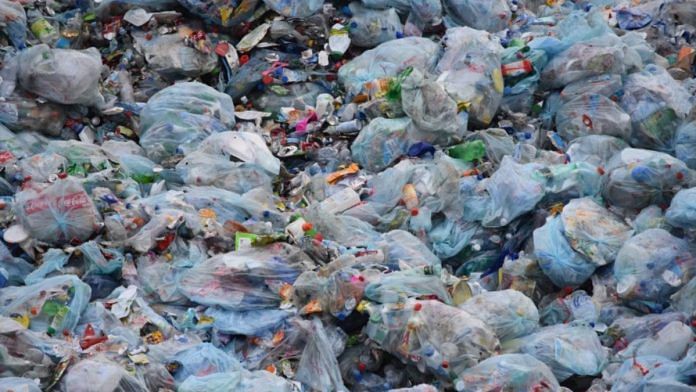- More formal negotiations for a global treaty on plastic pollution are planned at this month’s United Nations Environment Assembly (UNEA), from 28 February – 2 March 2022.
- A treaty would require a standardized measurement system for countries to report on plastic pollution progress.
- Countries increasingly see the benefits of investing in transparency and evidence with several new plastic waste flow analyses kicking off in 2022.
- A treaty offers an unprecedented opportunity to harmonize the metrics expertise and resources already available.
Formal negotiations for a global treaty are kicking off
Amidst growing recognition of the plastic pollution crisis and the need for a coordinated response to this challenge, countries and companies are increasingly pushing for the establishment of a global treaty for plastic pollution. At this year’s United Nations Environment Assembly (UNEA), member states will be debating a formal proposal on whether to start negotiations on a global plastic pollution treaty and what such a treaty should include.
Already 156 countries (3/4 of all UN Member states) have publicly called for a treaty, alongside more than 2.1 million people. Over 100 leading global companies have also supported a business call urging the UN member states to start negotiations on the treaty at UNEA. Groups such as the American Chemistry Council (ACC) who have previously opposed a treaty have now come forward in support.
In the midst of UNEA, discussions are now increasingly shifting towards what kind of elements an effective treaty must include. Aside from a growing consensus that regulatory measures need to cover the whole life cycle of plastics and not only waste management challenges, there is also a clear recognition that all states will have to align to create a shared evidence base: how are different types of plastic defined, how do we measure and report on plastic waste and leakage into the environment, how do we ensure a scientific basis for progress.
Informing the design of a global reporting system
Information that countries may need to report on includes plastic waste generation, import and export of plastic scrap, collection and sorting, recycling of plastic, disposal and mismanaged waste. The treaty process getting underway is an unprecedented opportunity to accelerate and scale existing national efforts to create transparency and evidence through good measurement practices. These pioneering efforts by a handful of countries will serve as a key resource for informing much of the treaty’s substance that will be negotiated in the months to come.
Indonesia, Vietnam and Ghana are examples of countries that have recently started measuring plastic waste flows – a thorough process engaging government, industry, civil society and academia alike with the support of the Global Plastic Action Partnership (GPAP). An open-source national analytics tool developed together with SYSTEMIQ has allowed the three countries to understand their plastic pollution situation and what concrete steps are needed to transition to a circular plastics economy.
Nigeria, Pakistan, Bangladesh and India are taking a similar approach this year and will leverage the tools and resources that have been developed to launch a formal plastic pollution analysis. This will also include deploying modelling functionalities allowing these countries to run projections into the future, test different strategy scenarios and understand their environmental, economic and social impacts.
Kenya, Mozambique, South Africa, Mexico and Thailand are other examples of countries that have stepped up in measuring plastic pollution with support by UNEP’s and IUCN’s wide-ranging hotspot assessments.
Countries like Canada, Germany and France are equally active in tracking plastic waste flows and are taking an increasingly proactive approach in sharing insights and advocating for an alignment at regional and global level.
An unprecedented opportunity to standardize the measurement process
Organizations currently supporting in-country plastic waste and pollution data collection and evaluation are UNEP-IUCN via their National Guidance for Plastic Pollution Hotspotting and Shaping Action and their global data platform PLASTEAX. The Global Plastic Action Partnership (GPAP) with SYSTEMIQ via their National Assessment and Modelling (NAM) tool. The World Bank, The Alliance to End Plastic Waste with their data platform PRISM and the University of Georgia’s Circularity Assessment Protocol (CAP). UN Habitat via their Waste Wise Cities initiative and WWF via ReSource.
The challenge remains that organizations and countries (and sometimes provinces or cities) apply different measurement methods often based on national or regional-specific policies or priorities. While some countries trace predominantly packaging waste or single-use plastics, others may include other categories like industrial plastics and microplastics. Definitions of different types of plastics are another aspect where a harmonized approach is still lacking.
A global treaty on plastic pollution could largely alleviate these challenges by supporting countries with one consistent measurement and reporting system that builds on the insights of the world’s current best-in-class methodologies. Learning from countries and their current approaches will be imperative in developing one consistent framework that is realistically applicable by all countries. Reliable plastic data could be the magic ingredient we need to ensure a transparent and accountable application of a treaty.
This article was originally published in The World Economic Forum.
Also read: Warming of Indian Ocean could weaken southwest monsoon, German study on rains in India says






